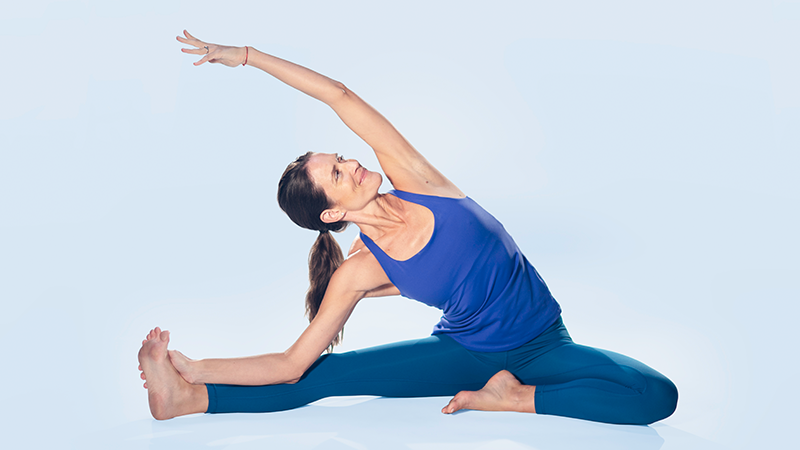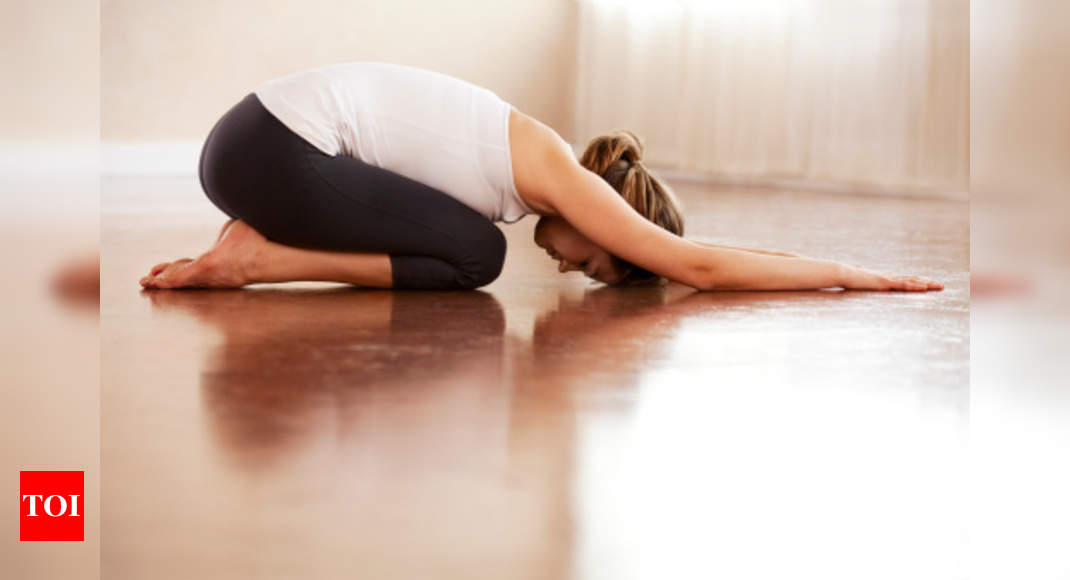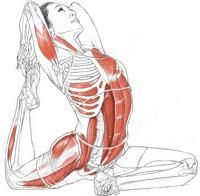
A yoga journal magazine can be a wonderful resource for aspiring yogis. Its content focuses on yoga, and includes detailed information about yoga poses and meditations. It can also be subscribed through your local library. It is not available in all countries. Before you try to subscribe, it is best to first check with the library.
Yoga Journal is a journal of yoga
A Yoga Journal, a journal you keep in your own handbook that will serve as a reminder about your yoga practice, is an excellent option. It's an excellent way to collect your thoughts, feelings and experience from each yoga session. Many yoga teachers will keep a journal for their students, but they might also keep the journal for themselves to examine their relationship to yoga.

It is a valuable resource for yogis
Yoga Journal is a great resource. It features articles about yoga practices, nutrition, and the mind-body connection. You will also find detailed descriptions and illustrations of yoga poses. It also features special issues devoted to yoga for beauty, fashion and healthy lifestyle.
It contains detailed information about the various yoga poses
Yoga Journal magazine has a large collection of books and DVDs containing detailed information on many yoga poses. These books and videos cover everything from basic poses to advanced versions, as well as twists and challenge poses. These videos and books provide step-by-step instructions as well as video tutorials that will make it easier to practice yoga.
It offers meditations
Yoga Journal magazine can be a great resource for learning how to meditate. These topics cover everything you need to know about meditation, including how to find peace in your heart and soul and how to balance your mind and body. For beginners, guided meditations are available to help you focus.
It offers advice on healthy living
A popular resource for people looking to improve health and wellbeing is the Yoga journal magazine. It offers advice on the practice of various types of yoga, as well history and philosophy. Subscribers can also create their own customized yoga routines by using the index of poses in the magazine.

You have a year-long subscription
The Yoga Journal, a magazine first published in 1987, is still being used today. It has grown to be a highly commercialized magazine. It was once the number one yoga magazine, but it has fallen from its glory. While you can still buy the magazine, there will likely be many ads.
FAQ
How long does it take you to learn Yoga?
You must learn how to do yoga correctly, just like any other skill. Once you have mastered the basics of yoga, you will be able practice at home with no difficulty.
Before you start your class, warm up for about 20-30 minutes. Then spend 5-10 minutes warming up your body by performing simple stretches. Start to move into more challenging positions.
Once you've learned the basics, intermediate classes are available where you'll be able to learn more advanced moves. For example, if your first attempt at yoga is to learn, you may start with standing poses such as the Tree pose (Vrksasana), Mountain pose (Tadasana), etc.
Do I need a warm-up before I try yoga?
No. It's not necessary to warm-up before doing a yoga session.
If your muscles feel stiff or sore after exercising, you can stretch them to loosen them.
Do yoga has side effects?
Yoga has risks like any other form of physical activity. The most serious risk is injury. The main risk is injury.
If you're just starting yoga, you may feel dizzy and faint standing on your head.
This is caused by blood pooling in your brain. It will pass quickly, so don't be alarmed.
Do not hold your breath if you feel chest pains while performing downward-facing dogs. It will only make the situation worse and increase your heart rate.
What are the health benefits of yoga?
Yoga originated in India and is an ancient form of meditation. As a way of improving mental health and fitness, Hindu monks created it over several centuries. Many people turn to yoga for stress relief and relaxation. Some people believe that they can increase their flexibility and strength through yoga.
Yoga is great for older adults looking to be active. It improves coordination and balance. It can help you avoid injuries due to falls or other causes.
Yoga strengthens your cardiovascular system, which is why it's good for your heart. This is especially helpful for those who are obese, have high blood sugar, or have diabetes.
Yoga has been shown to help reduce stress, anxiety depression, insomnia, and other symptoms. Chronic pain can often result from these conditions, so yoga practice may prove especially helpful for people with arthritis or fibromyalgia.
Your muscles lose elasticity as you age. But yoga keeps your muscles flexible and strong. As you get older, you'll notice that yoga increases your energy and stamina.
According to the National Institute on Aging (NIA), regular yoga has been shown by studies to decrease symptoms of depression such as fatigue, hopelessness, and feeling depressed. The institute also reports that yoga can help lower cholesterol levels and increase bone density.
Yoga can also relieve headaches, back pain, and other issues. The slow pace of yoga and its gentle movements are particularly helpful in reducing muscle strains and spasms.
Does yoga make me look like a hunk?
No! You will not look like a Hollywood star after practicing yoga. Yoga will make you look stronger, leaner and more flexible.
Statistics
- According to the Agency for Healthcare Research and Quality, falls are incredibly common among older adults in nursing facilities. Even the simplest ones can increase the risk of death (24). (healthline.com)
- Lock in 25% off your Founding Member rate. (corepoweryoga.com)
- Gentle yoga has been shown to ease some of the discomforts of tender, swollen joints for people with arthritis, according to a Johns Hopkins review of 11 recent studies. (hopkinsmedicine.org)
- About one in seven U.S. adults practiced yoga in the past 12 months, according to a 2017 national survey. (nccih.nih.gov)
- The people in the yoga group were 37 percent more likely to have quit smoking by the end of the 8-week program. (nccih.nih.gov)
External Links
How To
Is yoga a good way to exercise?
Yoga isn't just for people who want to lose weight. Yoga is not just for those who want to lose weight. It helps them develop flexibility and balance.
Yoga isn't just exercise, but an art form. The poses are used as a way to relax and meditate. These poses help improve our posture, concentration, breathing, and overall health.
A "yogi" is someone who practices yoga. Yogis follow various forms of yoga, including Hatha, Ashtanga, Iyengar, Vinyasa, Bikram, Kundalini, Yin Yang, and Restorative.
There are many types of yoga, but they all have similar goals. Each style focuses on different aspects. You can choose from meditation, pranayama or Hatha yoga.
There are some yoga movements that don't require equipment.
-
Sun Salutation: This series of 12 postures begins with a forward bent, and then 10 additional poses.
-
Warrior pose - A warrior pose can be achieved by holding a stick/staff.
-
Triangle Pose – This is a pose where you raise one leg behind your head and bend at the knee.
-
Standing Forward Bend- This is when you lie down straight on the ground, with your legs straight. Then, fold forward to the waist.
-
The seated twist is done while sitting on a mat or chair.
-
Cobra Pose - This pose is performed lying flat on your back with arms overhead.
-
Child's posing - This position is performed while facing up on the ground.
-
Cat/Cow Pose- This is a combination of a cat/cow pose. While lying face down, raise your upper body off the ground. Now roll to your side, and then place your hands below your shoulders.
-
Head tilt - This is a pose where you tilt your head back while keeping your eyes open.
-
Shoulder Stand – This is a standing position in which your feet are raised above your head.
-
Tree Pose – This pose involves kneeling on your heels with your hands beneath your shoulders.
-
Bow Pose- Bend forward from your hips into bow pose and place your hands on to the ground.
-
The corpse pose is held for five to ten minutes.
-
Mountain Pose – This is a pose known as mountain pose. Your spine should be straightened and you must stand tall.
-
Legs Up the Wall Pose- This pose can be achieved by hanging upside-down at a wall.
-
Side Angle Pose -- This pose requires you to lean against a wall and place your right arm in front of the wall.
-
Plank Position: This is when your legs are bent at the waist and your arms extend out to one side.
-
Bridge Pose – Balance on your elbows while balancing on the toes in this pose.
-
Reverse Table Top Pose: This is when you lie on your stomach and extend your arms towards the ceiling.
-
Handstand – This pose requires strength and balance. This pose requires you to hold on to two walls or a doorframe.
-
Half Moon Pose – Also known as Hero Pose, this pose is also called Hero Pose. You can perform it by standing on your hands or toes.
-
Headstand (or handstand) - This position requires balance and strength. This pose can be done on a wall, or by using a doorframe.
-
Forearm Balance: This pose requires that your forearms rest on the tabletop.
-
Spinal Twist- This pose involves lying on your belly and reaching your arms.
-
Supported Boundangle pose - This position requires balance and support. You will need to find a sturdy object like a tree branch or an old beam to lean on.
-
Wide Leg Forwardfold - To achieve this pose, spread your legs apart while touching your toes.
-
Single Pigeon Pose -- This pose is similar in style to the forward fold with one leg, but it only involves one leg.
-
Extended Puppy Dog Poses - This pose can be very relaxing. This is done by stretching your legs outwards and bending your knees.
-
Situated Forward Bend – This pose allows you to sit cross-legged while stretching your calves.
-
Crow Pose - Although this pose is hard to do, it can be extremely rewarding once mastered. This is achieved by elevating your arms above your head, and then lowering your arms until they are parallel to the ground.